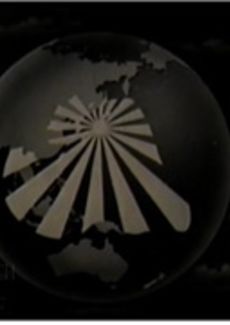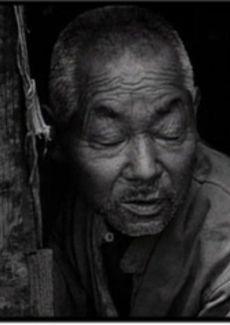Library Catalog
On the Shelf at CCBC Libraries
-
Hirohito's War by In his magisterial 1,208 page narrative of the Pacific War, Francis Pike's Hirohito's War offers an original interpretation, balancing the existing Western-centric view with attention to the Japanese perspective on the conflict. As well as giving a 'blow-by-blow' account of campaigns and battles, Francis Pike offers many challenges to the standard interpretations with regards to the causes of the war; Emperor Hirohito's war guilt; the inevitability of US Victory; the abilities of General MacArthur and Admiral Yamamoto; the role of China, Great Britain and Australia; military and naval technology; and the need for the fire-bombing of Japan and the eventual use of the atom bomb on Hiroshima and Nagasaki. Hirohito's War is accompanied by additional online resources, including more details on logistics, economics, POWs, submarines and kamikaze, as well as a 1930-1945 timeline and 178 maps.
Call Number: D767 .P55 2015 -
Retribution by Hailed in Britain as Spectacular . . . Searingly powerful (Andrew Roberts, The Sunday Telegraph), a riveting, impeccably informed chronicle of the final year of the Pacific war. In his critically acclaimed Armageddon, Hastings detailed the last twelve months of the struggle for Germany. Here, in what can be considered a companion volume, he covers the horrific story of the war against Japan. By the summer of 1944 it was clear that Japan's defeat was inevitable, but how the drive to victory would be achieved remained to be seen. The ensuing drama--that ended in Japan's utter devastation--was acted out across the vast stage of Asia, with massive clashes of naval and air forces, fighting through jungles, and barbarities by an apparently incomprehensible foe. In recounting the saga of this time and place, Max Hastings gives us incisive portraits of the theater's key figures--MacArthur, Nimitz, Mountbatten, Chiang Kai-shek, Mao, Roosevelt, Churchill, and Stalin. But he is equally adept in his portrayals of the ordinary soldiers and sailors--American, British, Russian, Chinese, and Japanese--caught in some of the war's bloodiest campaigns. With unprecedented insight, Hastings discusses Japan's war against China, now all but forgotten in the West, MacArthur's follies in the Philippines, the Marines at Iwo Jima and Okinawa, and the Soviet blitzkrieg in Manchuria. He analyzes the decision-making process that led to the bombing of Hiroshima and Nagasaki--which, he convincingly argues, ultimately saved lives. Finally, he delves into the Japanese wartime mind-set, which caused an otherwise civilized society to carry out atrocities that haunt the nation to this day. Retribution is a brilliant telling of an epic conflict from a master military historian at the height of his powers.
Call Number: D767 .H353 2008 -
Blossoms in the Wind by In the last days of World War II, the Japanese unleashed a new breed of warrior. They were the Kamikaze - idealistic young men believing there there could be no greater glory than to sacrifice their lives in suicide attacks to defend their homeland. But what of those men who took the sacred oath to die in battle...and lived? Soon after 9/11 author Sheftall was given unprecedented intimate access to the cloistered community of Japan's last remaining kamikaze corps survivors. The result is a poignant and unforgettable glimpse into their lives.
Call Number: D792.J3 S43 2005
Streaming Video
-
America Goes to War in the Pacific
 Newsreel
Newsreel
Databases
-
ProQuest Central This link opens in a new window

Articles on any subject. This is a good place to start.
-
ProQuest Historical Newspapers: The Baltimore Sun This link opens in a new window

Primary source articles covering the politics, society and events of the time period 1837 - 1992.
-
History Research This link opens in a new window

Primary documents as well as essays about historical topics and people.
-
World History This link opens in a new window
 Articles, essays, and primary sources on the history of the world.
Articles, essays, and primary sources on the history of the world.
Online From CCBC Libraries
-
Emperor Hirohito and the Pacific War by This reexamination of the controversial role Emperor Hirohito played during the Pacific War gives particular attention to the question: If the emperor could not stop Japan from going to war with the Allied Powers in 1941, why was he able to play a crucial role in ending the war in 1945? Drawing on previously unavailable primary sources, Noriko Kawamura traces Hirohito's actions from the late 1920s to the end of the war, analyzing the role Hirohito played in Japan's expansion. Emperor Hirohito emerges as a conflicted man who struggled throughout the war to deal with the undefined powers bestowed upon him as a monarch, often juggling the contradictory positions and irreconcilable differences advocated by his subordinates. Kawamura shows that he was by no means a pacifist, but neither did he favor the reckless wars advocated by Japan's military leaders.
Publication Date: 2015 -
A War It Was Always Going to Lose by Jeffrey Record has specialized in investigating the causes of war. In The Specter of Munich: Reconsidering the Lessons of Appeasing Hitler (Potomac Books, Inc., 2006), he contended that Hitler could not have been deterred from going to war by any action the Allies could plausibly have taken. In Beating Goliath: Why Insurgencies Win (Potomac Books, Inc., 2007), Record reviewed eleven insurgencies and evaluated the reasons for their success or failure, including the insurgents' stronger will to prevail. Wanting War: Why the Bush Administration Invaded Iraq (Potomac Books, Inc., 2009) includes one of Record's most cogent explanations of why an often uncritical belief in one's own victory is frequently (but not always) a critical component of the decision to make war. Record incorporates the lessons of these earlier books in his latest, A War It Was Always Going to Lose: Why Japan Attacked America in 1941. The attack on Pearl Harbor is one of the most perplexing cases in living memory of a weaker power seeming to believe that it could vanquish a clearly superior force. On closer inspection, however, Record finds that Japan did not believe it could win; yet, the Japanese imperial command decided to attack the United States anyway. Conventional explanations that Japan's leaders were criminally stupid, wildly deluded, or just plumb crazy don't fully answer all our questions, Record finds. Instead, he argues, the Japanese were driven by an insatiable appetite for national glory and economic security via the conquest of East Asia. The scope of their ambitions and their fear of economic destruction overwhelmed their knowledge that the likelihood of winning was slim and propelled them into a war they were always going to lose.
Publication Date: 2010 -
World War II Pacific Island Guide by Covering all Pacific islands involved in World War II military operations, this book is a detailed, single source of information on virtually every geo-military aspect of the Pacific Theater. Arranged regionally and, to the extent possible, chronologically according to when islands entered the war, entries provide complete background information. Along with island names, nicknames, Allied code names, location, and wartime time zones, the entries include such topics as the island's physical characteristics, weather, health hazards, historical background, native population, natural resources, and military value. Japanese and Allied strategies and operations, military problems caused by terrain, military installations, Japanese units and key commanders, Allied units and key commanders, and brief battle descriptions are also covered along with the island's postwar status. A valuable resource for researchers, historians, military history enthusiasts, and war gamers, the book provides complete background information on the geo-military aspects of the Pacific Ocean region, its islands, and the roles they played in the war. 108 maps provide specific information. Until now, geo-military information could only be found by searching four to ten publications on each island.
Publication Date: 2001 -
World War II in Asia and the Pacific and the War's Aftermath, with General Themes by A companion to World War II in Europe, Africa, and the Americas, this volume reevaluates the most enduring literature on basic aspects of the war in Asia and the Pacific. It also covers themes pertaining to societies at war, culture, the arts, and science and technology as well as international relations and the postwar world. Included are not only grand strategy, military and naval campaigns, and matters of diplomacy, but also resistance, collaboration, prisoners of war, and broad topics of the home front, including chapters on gender issues, film, literature, popular culture, and propaganda. This volume and its companion provide the first comprehensive historiographic reference work on the war. Each chapter describes the state of knowledge on the topic, relating each bibliographic reference to the chapter's themes and issues, and concludes with a bibliography. Recent original scholarship is included when it aids new understanding, and older works of enduring value also find a place. The essays in this volume will interest scholars and college teachers as well as advanced students and serious amateurs seeking insight into the history of the war and its literature.
Publication Date: 1998
Websites
-
World War II in the Pacificfrom the Holocaust Encyclopedia
-
Pacific Theater of Operationsfrom the National WWII Museum

